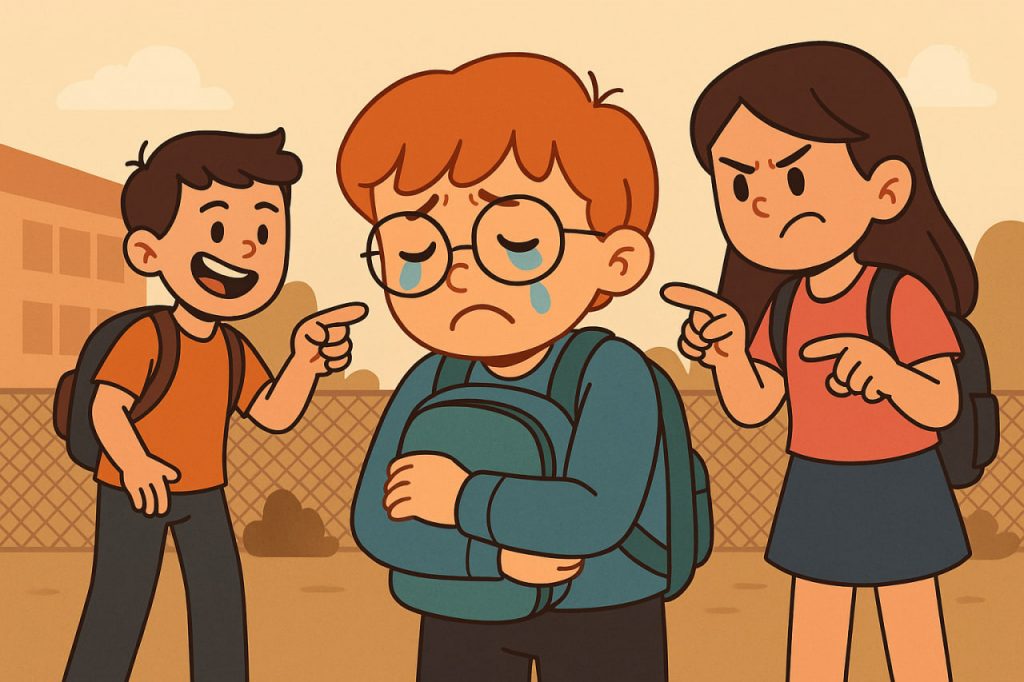Bullying is a repeated, intentional form of aggression or intimidation that involves a power imbalance. It can occur in schools, workplaces, online, and even within families. While often dismissed as a “normal” part of growing up, psychologists and educators now recognize bullying as a serious issue with long-term effects on mental health, academic performance, and emotional development.
According to the World Health Organization, bullying is considered a public health concern, especially among children and teens.
Types of Bullying
Bullying takes many forms:
- Physical bullying: Hitting, pushing, or damaging someone’s belongings
- Verbal bullying: Name-calling, threats, or insults
- Social (relational) bullying: Exclusion, spreading rumors, or manipulation
- Cyberbullying: Using digital platforms to harass, threaten, or shame someone
- Psychological bullying: Gaslighting, intimidation, or control, often seen in adult relationships or workspaces
Each type can be equally damaging, and many victims experience more than one form at once.
Why Bullying Happens
Experts identify several underlying causes of bullying behavior:
- Desire for power or control
- Low self-esteem in the bully, masked by aggression
- Imitating aggressive behavior seen at home or in media
- Peer pressure or group dynamics that reward cruelty
- Lack of empathy training or emotional regulation skills
- Cultural tolerance of dominance, shaming, or competitiveness
In some cases, bullies have experienced trauma or neglect, leading them to lash out as a coping mechanism.
Effects on Victims
The impact of bullying can be severe and long-lasting, especially during developmental years. Victims may suffer:
- Anxiety, depression, and post-traumatic stress
- Suicidal thoughts or self-harm
- Lower academic performance
- Social withdrawal and trust issues
- Sleep disturbances and physical symptoms (e.g., headaches, stomach pain)
Children who are bullied may carry this trauma into adulthood, developing issues with self-worth, intimacy, or emotional resilience.
What About the Bullies?
Surprisingly, research shows that bullies also suffer:
- Higher risk of antisocial behavior later in life
- Increased chances of academic failure or dropping out
- Difficulties forming healthy relationships
- Potential for criminal behavior if aggression is untreated
Addressing bullying requires helping both victims and perpetrators heal and grow.
What Can Be Done?
Experts agree that bullying is preventable with a coordinated response:
- Education: Schools must teach empathy, emotional intelligence, and conflict resolution
- Clear policies: Zero-tolerance rules must be paired with safe reporting systems
- Parental involvement: Open communication, validation, and watching for warning signs
- Therapeutic support: Access to counselors for both victims and aggressors
- Digital literacy: Teaching children to protect themselves online and speak up about cyberbullying
- Community programs: Mentoring, group activities, and inclusive environments reduce risk
Bullying Warning Signs
In victims:
- Sudden withdrawal
- Decline in grades
- Avoiding school or activities
- Unexplained injuries or lost possessions
In bullies:
- Aggressive behavior at home
- Blaming others often
- Need to dominate or humiliate
- Lacking remorse or empathy
Early intervention is key — silence often makes the problem worse.
Glossary
- Bullying: Intentional, repeated harm involving a power imbalance
- Cyberbullying: Harassment using digital communication
- Gaslighting: Manipulating someone into doubting their own perceptions
- Power imbalance: One party has more strength, status, or influence over another
- Empathy: The ability to understand and share another person’s feelings


